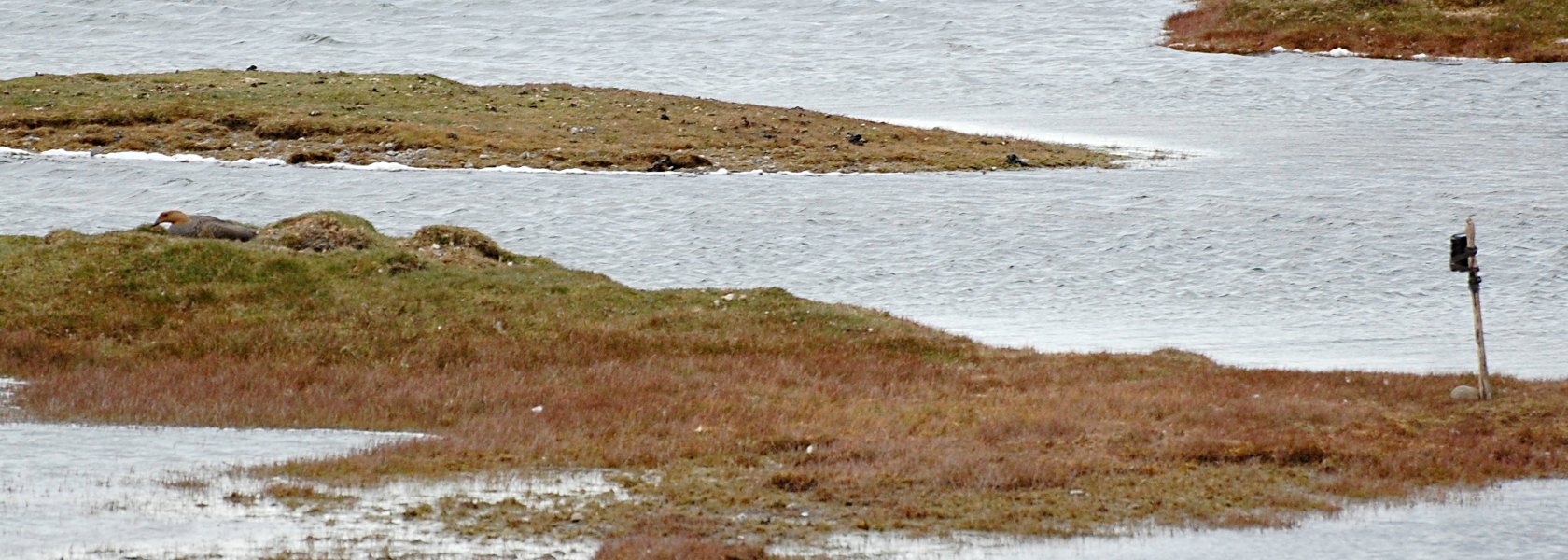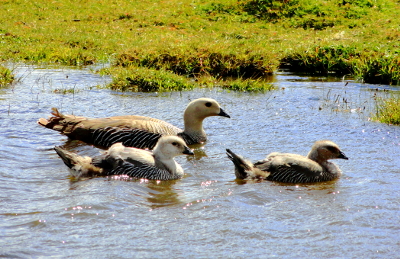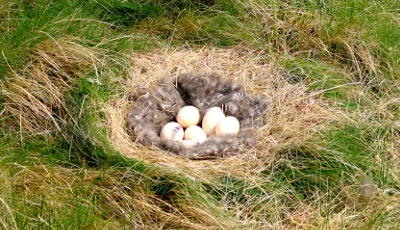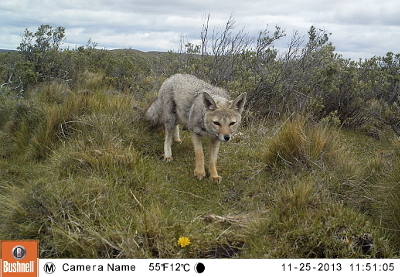by Natalia Cossa
South American sheldgeese (Chloephaga spp.) is a group composed by five endemic birds of central and southern South America. The mainland populations of Upland Goose (Chloephaga picta) and Ruddy-headed Goose (C. rubidiceps), together with Ashy-headed Goose (C. poliocephala) migrate forming mixed flocks from breeding grounds in southern Patagonia and Tierra del Fuego (Argentina and Chile), to the wintering areas in northern Patagonia and the southern pampas of Buenos Aires Province (Argentina), travelling a distance of 1300 km along a migration route that is still unknown. In this region, they frequent grasslands and pastures, feeding on natural vegetation and, in smaller quantity, on crops. In the breeding grounds, they inhabit the open forest, areas of ecotone and the magellanic steppe, where the sheldgeese used to be the most common waterfowl before 1950. However, in the last decades, populations have severely declined. The three species are considered endangered in Argentina: Ruddy-headed Goose is categorized as critically endangered, while the Ashy-headed Goose as threatened and the Upland Goose as vulnerable. In addition, Ruddy-headed Goose was declared “Natural Monument” in Buenos Aires and Santa Cruz Provinces (Argentina). Also, all Chloephaga spp. are protected by prohibiting hunting, trapping and trade.

Ruddy-headed Goose (C. rubidiceps), Ashy-headed Goose (C. poliocephala) and Upland Goose (C. picta) couple. Photos: N. Cossa.
The situation of the Ruddy-headed Goose is definitely the most worrying. Whilst in Islas Malvinas resident population reaches 40000-80000 mature individuals, the mainland population is below 1000 individuals. In addition, in recent censuses conducted in the reproductive area of Argentina, there were counted less than 40 individuals. Further, recent molecular evidence suggests that the two populations (mainland and Islas Malvinas) are genetically distinct. These significant differences and the result of last censuses would place the mainland group under the highest level of conservation worldwide.
In Argentina, sheldgeese were once considered harmful to agriculture (because they feed on crops and pastures) and were declared an “agriculture pest” by the government in 1931, which promoted a massive destruction of sheldgeese eggs. Although hunting is now banned, in wintering grounds they are still a victim of game hunting. In reproductive grounds, populations continuous decline is attributable to a wide range of effects: increased predation of eggs and chicks by the introduced Grey Fox (Pseudalopex griseus) and American Mink (Neovison vison) in Tierra del Fuego, and the disappearance of tall grasses due to overgrazing by sheep and cows, which favors nest detection by predators. Also, the historical Argentinean sheldgeese’s breeding areas (southern Santa Cruz and northern Tierra del Fuego Provinces) differ in predator assemblages, while terrestrial predators in Tierra del Fuego are exotic, they are native in Santa Cruz.
The project is focused in getting more precise information about Upland Goose, Ashy-headed Goose and Ruddy-headed Goose to improve existing recommendations for their conservation in breeding grounds. For this, we aim to identify the principal threatens for reproduction, characterize the habitat and the interactions between sheldgeese and other herbivores.
Fieldwork
The study area is in the magellanic steppe of southern Santa Cruz and northern Tierra del Fuego. The area is mostly hilly and consists of vast fields of grass and wet meadows, ‘coironales’ (Festuca gracillima), Junellia tridens shrub and Ugni molinae shrub.

Camera trap set in an Upland Goose nest at Ea. Sara, Tierra del Fuego. Photo: Antonella Gorosabel.
Related publications
Cossa N, Fasola L, Roesler I & Reboreda JC. Ruddy-headed Goose Chloephaga rubidiceps: former plague and present protected species on the edge of extinction. Bird Conservation International - DOI: https://doi.org/10.1017/S0959270916000101 (2016).
Cossa NA, Fasola L, Roesler I & Reboreda JC. Impacts of traditional livestock farming on threatened sheldgeese (Chloephaga spp.) in Patagonia.. Avian Conservation and Ecology 15(2):1. https://doi.org/10.5751/ACE-01630-150201 (2020).
Cossa NA, Malerba MS, Fasola L & Roesler I. Pumas (Puma concolor) en un nido de cauquén común (Chloephaga picta). Notas sobre Mamíferos Sudamericanos (http://doi.org/10.31687/saremNMS.20.0.3) (2020).






